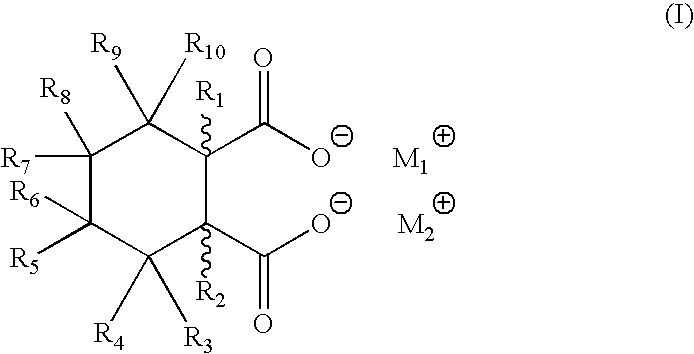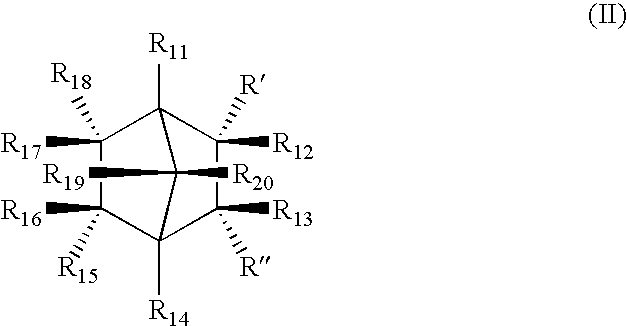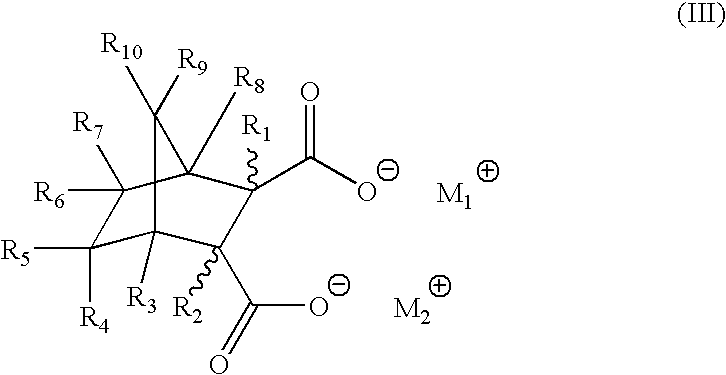Bimolecular nucleation methods for thermoplastics
a thermoplastic and molecular technology, applied in the field of bimolecular nucleation methods for thermoplastics, can solve the problems of inability to disclose the ability of each patent, unwanted high levels of beta-crystals, and inability to meet the requirements of large-scale industrial applications, and achieves exceptional thermal stability and non-migration properties, and low beta-crystal structure. , the effect of high nucleation efficiency
- Summary
- Abstract
- Description
- Claims
- Application Information
AI Technical Summary
Benefits of technology
Problems solved by technology
Method used
Image
Examples
Embodiment Construction
[0051] This invention can be further elucidated through the following examples where examples of particularly preferred embodiment within the scope of the present invention are presented.
[0052] Production of Inventive Additive Compositions
[0053] The preferred additive compositions were produced in accordance with the following table (formulations 5 and 6 were separate made for masterbatching):
1TABLE 1 Acid / Salt Combinations and Amounts Added Ex. # Acid (ppm) Salt (ppm) 1 bicyclo[2.2.1]heptane-2-,3-dicarboxylic CaStearate (6600 ppm) acid (1800 ppm) 2 same NaStearate (6700 ppm) 3 same LiStearate (6400 ppm) 4 same ZnStearate (7000 ppm) 5 same (but at 83000 ppm) --6 -- CaStearate (273200 ppm) 7 hexahydrophthalic acid (2500 ppm) LiStearate (1000 ppm) 8 same CaStearate (1000 ppm) 9 endo-norbornene-2,3-dicarboxylic acid NaStearate (3400 ppm) (1000 ppm)
[0054] Each example formulation was pelletized with a polypropylene homopolymer or random copolymer (for examples 7 and 8) for further intro...
PUM
| Property | Measurement | Unit |
|---|---|---|
| haze | aaaaa | aaaaa |
| haze | aaaaa | aaaaa |
| transparent | aaaaa | aaaaa |
Abstract
Description
Claims
Application Information
 Login to View More
Login to View More - R&D
- Intellectual Property
- Life Sciences
- Materials
- Tech Scout
- Unparalleled Data Quality
- Higher Quality Content
- 60% Fewer Hallucinations
Browse by: Latest US Patents, China's latest patents, Technical Efficacy Thesaurus, Application Domain, Technology Topic, Popular Technical Reports.
© 2025 PatSnap. All rights reserved.Legal|Privacy policy|Modern Slavery Act Transparency Statement|Sitemap|About US| Contact US: help@patsnap.com



